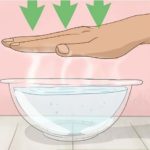Bathing for small children may seem easy, but if you don’t know how, it can be difficult for mothers. Some children will feel excited when they are in the bathtub, while others will feel very uncomfortable and cry and resist every time they bathe.
Let’s take a look at the reasons that can make children scared of bathing, to help them no longer hate bathing and washing.
1 Water flowing into the eyes
This is one of the common reasons that make children cry intensely every time they bathe. The reason is that children are still young, their blinking reflex is not sensitive, so when they bathe, if water flows into the child’s eyes, they will not react quickly and cause itching, discomfort in the child’s eyes.
To overcome this problem, mothers should equip a head cover, a special bathing hat for the child to protect their eyes. At the same time, when bathing and washing the child’s hair, it is necessary to position the child with their head tilted back so that water and soap do not fall into their eyes.
 Water flowing into the eyes
Water flowing into the eyes
2 Baby with rashes or skin ulcers
If the baby’s skin is in a state of rash or ulcer, it will be very sensitive when exposed to water and cause soreness, making the baby feel painful and uncomfortable.
To better care for your baby when bathing, mothers should avoid applying cleansers and rubbing in locations where the skin is damaged. In addition, after bathing, use a soft towel to dry off the water and apply medication.
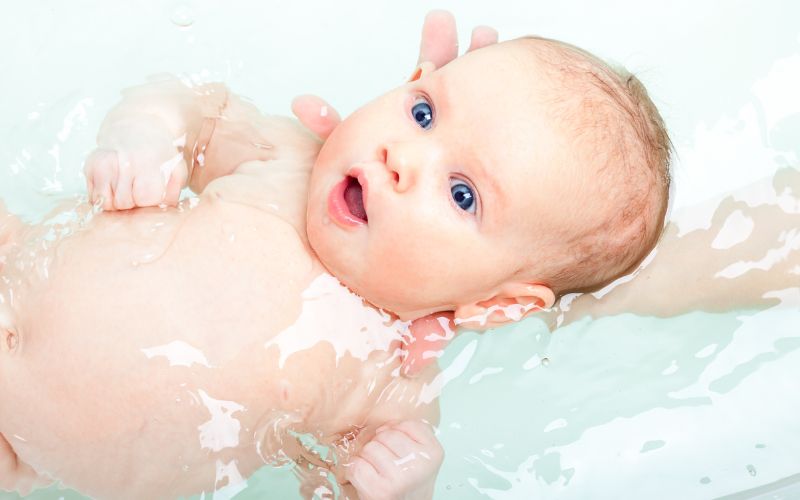 Baby with rashes or skin ulcers
Baby with rashes or skin ulcers
3 Water temperature too hot or too cold
Babies’ skin, especially newborns’ skin, is very sensitive, when exposed to water at an inappropriate temperature, it will make the baby uncomfortable and cry. Therefore, water that is too hot or too cold is not suitable for the baby and will make them increasingly scared of bathing.
Mothers should ensure the water temperature for the baby’s bath is 37°C, by using a thermometer to measure the water temperature for the baby’s bath!
 Water temperature too hot or too cold
Water temperature too hot or too cold
4 Fear of soap
As we know, the skin of babies is very sensitive. Meanwhile, bathing products contain high acid content, which can cause the baby’s skin to become red, allergic, itchy, and develop rashes.
Mothers should prioritize choosing products specifically for babies, with natural ingredients, containing less coloring, foaming agents, and fragrances.
 Fear of soap
Fear of soap
5 Bathing when the child is hungry
You may not know this, but if a child soaks in water for a long time, they will feel hungry more than usual. If the child is hungry before bathing, they will not be able to tolerate it and cry.
If you often encounter this problem, mothers can feed the child about 30 minutes before bathing to reduce their crying due to hunger!
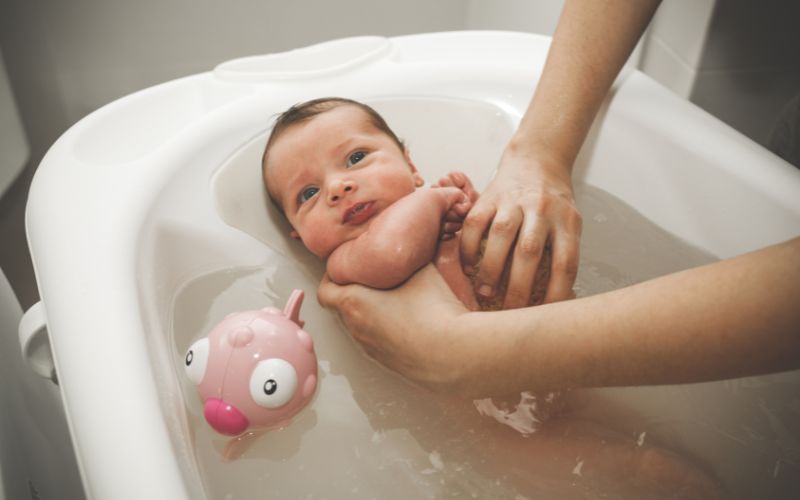 Bathing when the child is hungry
Bathing when the child is hungry
6 The child is not familiar with water
For newborns, the first experiences are extremely precious but not easy, especially getting used to water. Some babies may be afraid and uncomfortable when they first come into contact with water.
To help the baby get used to water, mothers can use a soft towel soaked in water to wipe their body when bathing, instead of putting them directly into the water. In addition, it is also necessary to pay attention when exposing the baby to water, start from their face, then their feet and hands, and finally other areas.
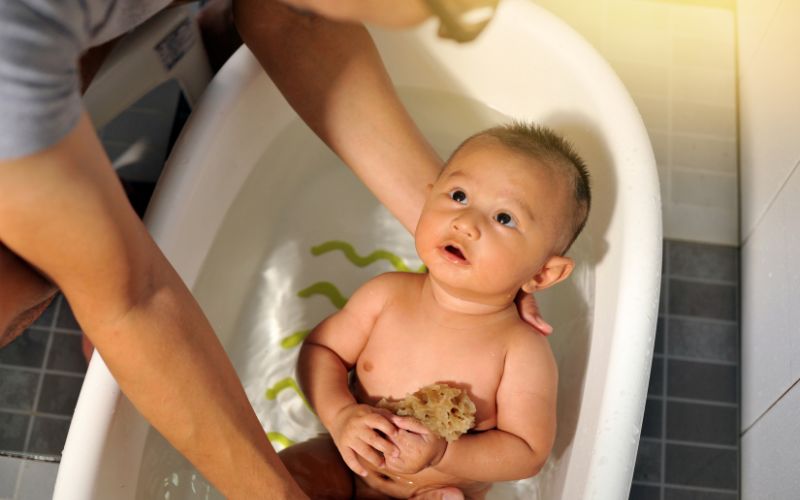 The child is not familiar with water
The child is not familiar with water
7 Bathing the child when they are tired or sleepy
If the child is not feeling well or sleepy, they should not be bathed immediately, because bathing at this time will make the child extremely uncomfortable and cry a lot.
Mothers should set a fixed bathing time during the day, as well as with other activities, helping the child establish good habits and reduce discomfort when bathing.
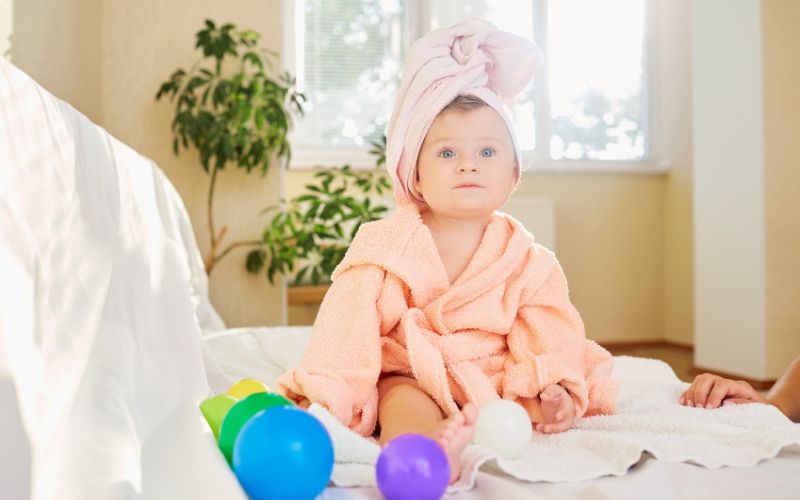 Bathing the child when they are tired or sleepy
Bathing the child when they are tired or sleepy
8 Bathtub or bathroom is not comfortable
When the child knows how to sit, mothers usually let them sit in the bathtub, however, if the bathtub is too small or too big, it can make the child uncomfortable. In addition, if the bathroom has a lot of drafts, it will make the child prone to cold and no longer enjoy bathing.
Therefore, mothers should prepare a bathtub of suitable size for the child, bathe in a draft-free place and hold the child to wash their head in the most comfortable position.
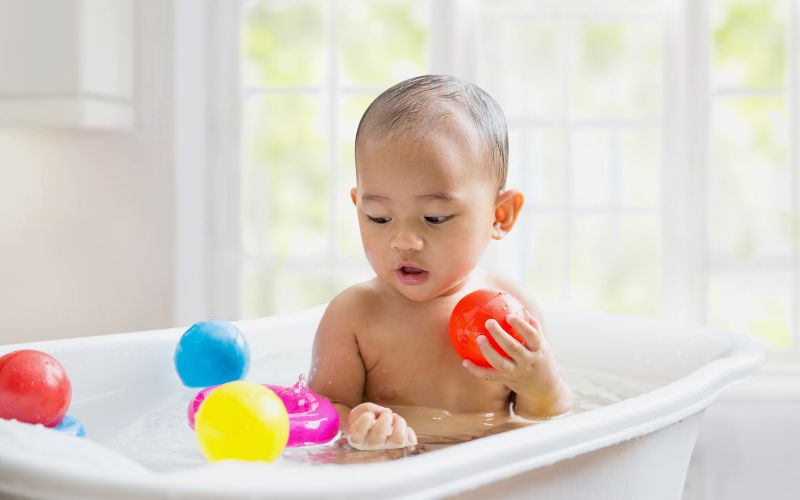 Bathtub or bathroom is not comfortable
Bathtub or bathroom is not comfortable
Above are the common reasons that can make children cry every time they bathe. Therefore, if the child cries every time they bathe, you should consider whether these reasons apply to them! Hopefully, the information provided will help breastfeeding mothers take better care of their children!
Source: Marrybaby.vn
How to Measure Water Temperature without a Thermometer – 3 Simple Tips for Home Use
Are you looking for an alternative to the traditional thermometer to measure water temperature? This article will provide tips and guidance on 3 ways to measure it without needing to use a thermometer.
How Much Laundry Detergent Should You Use in a Washing Machine?
Have you ever asked yourself how much laundry detergent is actually the best amount for your washing machine? According to research, the assumption that more detergent is better may not be accurate. In this article, we’ll investigate this topic and provide insight on how to optimize your laundry cleaning routine.

























